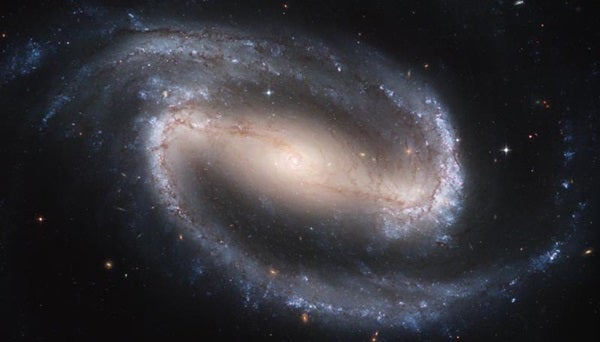The astronomers found that the fraction of spiral galaxies with bar features has doubled in the past 8 billion years — the latter half of the history of the universe.
Tom Melvin from the University of Portsmouth led the new study. He and the rest of the Galaxy Zoo science team used classifications provided by citizen scientists to select spiral galaxies across the universe for the study. Light from the farthest galaxies has taken 8 billion years to reach us, so we see them as they appeared 8 billion years ago, or when the cosmos was a little over half its present age. This allows astronomers to study how the characteristics of galaxies change over this time.
Many galaxies with spiral shapes, like our Milky Way Galaxy, also have central bar-shaped features. These structures are made up of stars, and the spiral arms extend from the ends of the bar.
Melvin’s group studied how the fraction of spiral galaxies with bars changed over time. They found that 8 billion years ago, only 11 percent of spirals had bars, but by 2.5 billion years ago, this proportion had doubled. In the present-day universe, two-thirds of galaxies have bars. And the more massive the galaxy, the more likely this is to be the case.
“This is a really interesting result, which has been made possible by the contributions of citizen scientists, who yet again are helping cutting-edge astronomical research when they spend time classifying galaxies at Galaxy Zoo,” said Melvin.
The new work also confirms that bars signify maturity for spiral galaxies and may play an important role in switching off the formation of new stars. For some of the most massive spiral galaxies, this happened relatively early in the life of the universe.
“It looks as though bars really are bad for spiral galaxies,” said Karen Masters from Portsmouth University. “As a bar grows in a galaxy, it is less likely to have any new stars being born, and the galaxy settles down to a sedate maturity.”










